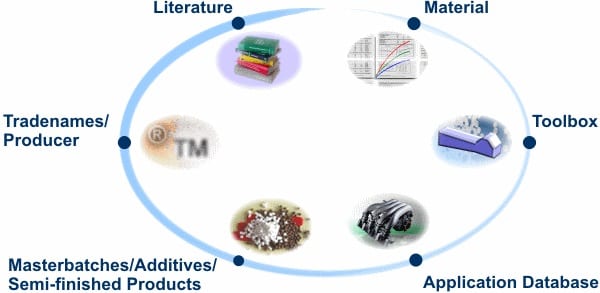Lately the interest in biomaterials has been growing rapidly, due to the general interest in sustainable products. Many companies would like to use such materials, particularly biopolymers as a replacement for oil-derived plastics; however, unlike with the plastics industry, elementary information about biopolymer properties is not easily available, making it difficult for engineers to select the proper materials.
Enter M-Base Engineering + Software and the Fachhochschule Hannover (University of Applied Sciences and Arts in Hanover) – they have created a biopolymer database to close this gap between materials research and application.
In 2007 a first version of the system focused on the documentation of material data published by the suppliers. This data gave a market overview. However, it did not allow any comparison between material from different suppliers or with conventional plastics. The material tests were not carried out under uniform standards and conditions. The collected data was presented in the database in the form of datasheets, without any possibility for numerical search or comparison.
 However, the second generation of the system has now been launched. To improve the biopolymer data-base, the Fachhochschule Hannover has collected samples of relevant biopolymers and is testing them in an extensive project, adhering to uniform methods. The material tests are being performed as close as possible to the international ISO standards and the rules of the international CAMPUS system. Only in cases where existing standards cannot be applied – for example, where rules for specimen production were missing – new standards were created. Many of the tests are now complete, and as more results become available, the database is grown.
However, the second generation of the system has now been launched. To improve the biopolymer data-base, the Fachhochschule Hannover has collected samples of relevant biopolymers and is testing them in an extensive project, adhering to uniform methods. The material tests are being performed as close as possible to the international ISO standards and the rules of the international CAMPUS system. Only in cases where existing standards cannot be applied – for example, where rules for specimen production were missing – new standards were created. Many of the tests are now complete, and as more results become available, the database is grown.
The information produced by these tests will complement the numerical material properties previously available and support decision makers using analogies and comparisons with successful use cases. For each application case, the data-base offers information like material, names of producers/processors, a short text about boundary conditions, and an image. It is also possible to search for applications with direct links to material datasheets. The makers also plan to extend the database further in the future, by adding information about additives for biopolymers, master batches, semi-finished goods and relevant suppliers.














